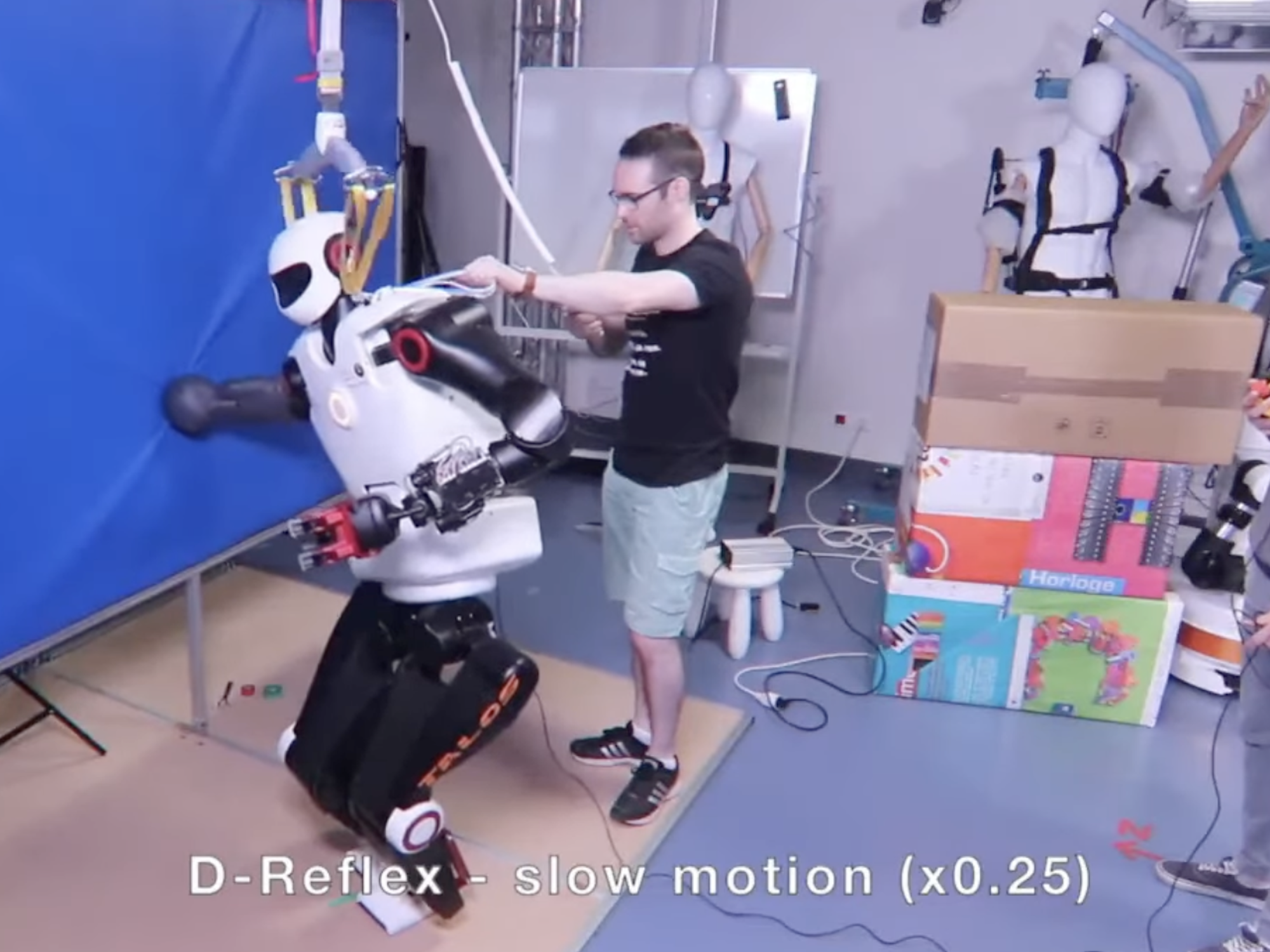

A lot of mobile robots do a pretty decent job of maintaining their balance while on the move, but like humans, they’re still prone to lose their footing from time to time. Although that bodes well for outrunning them during the impending robopocalypse, until then, it mostly means more potential for expensive repairs and time-consuming maintenance. As first unveiled earlier this year and highlighted by Engadget on Wednesday, at least a few more robots could be saved from taking a tumble in the near future thanks to advancements from researchers at France’s University of Lorraine.
[Related: The Boston Dynamics robots are surprisingly good dancers.]
Through a lot of trial and error—reportedly over 882,000 training simulations, to be more exact—developers designed a new “Damage Reflex” system for their humanoid robot test subject. When activated, the robot’s neural network quickly identifies the best spot on a neanrby wall to support itself if its stability gets compromised. Well, perhaps not so much “if” as “when,” judging from the demonstration video below.

As Engadget explains, the testing procedure sounds pretty simple, if a bit macabre: To showcase the Damage Reflex system in action, the robot has one of its legs “broken” to ensure it tips over towards a nearby test wall. In roughly three out of four instances, the machine’s arm was able to determine a solid spot to plant itself against in order to prevent falling to its doom. That’s pretty good when one takes into all the considerations all the physics variations regarding location, balance, weight, and distribution that go into determining how to prevent an accident in real time.
[Related: Boston Dynamics gave its dog-like robot a charging dock and an arm on its head.]
There are quite a few caveats to the Damage Reflex system’s early iteration: Firstly, it only stops a robot from falling over; it can’t help it recover or right itself. Right now, it’s also only been tested in a stationary test robot, meaning that the system currently isn’t capable of addressing accidents that may occur while walking or mid-stride. That said, researchers intend to further develop their system so that it’s also capable of handling on-the-go machines, as well as utilize nearby objects like chairs or tables to its advantage.
Companies like Tesla and Boston Dynamics are keen to push bipedal robots into everyday life, a goal that’s really only realistic as long as their products are relatively affordable to both purchase and maintain. Systems like Damage Reflex, while still in their infancy, could soon go a long way to both protect robots and extend their lifespans.
